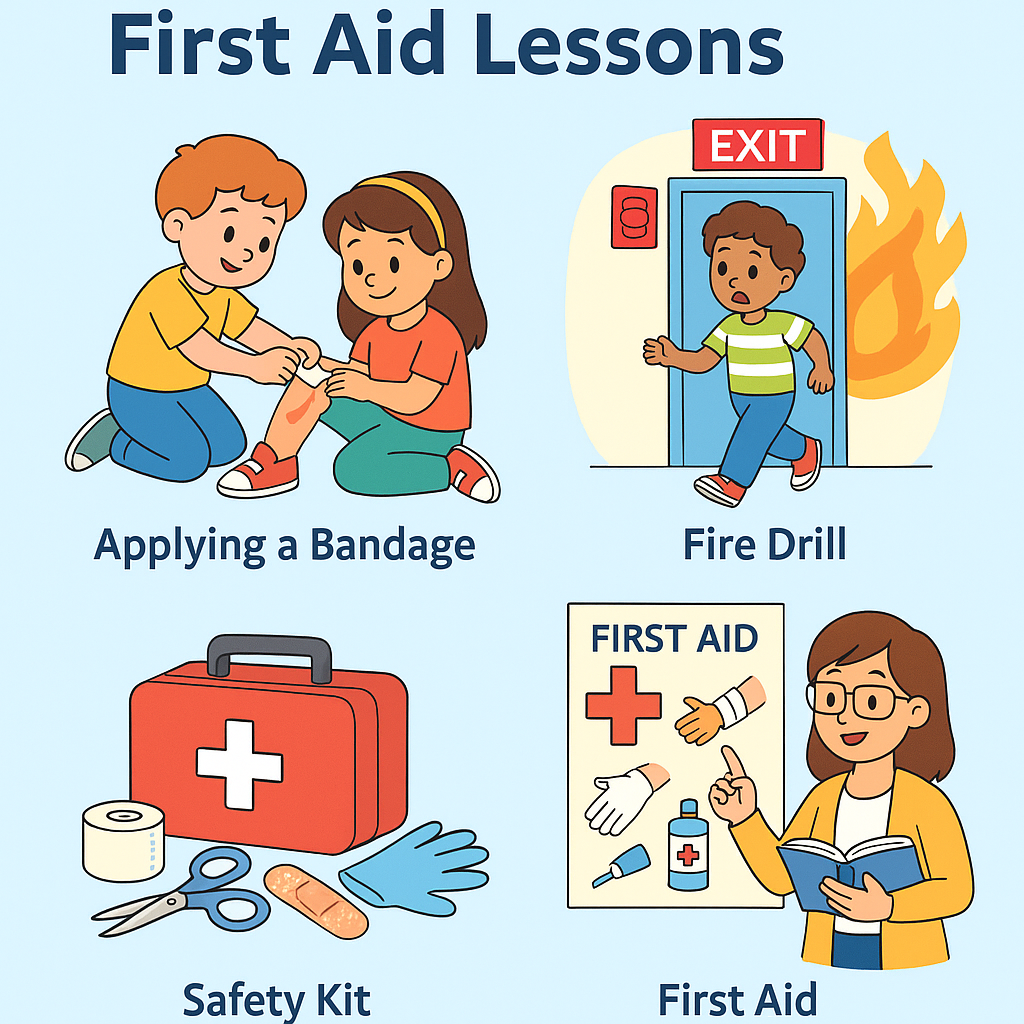How to Use Clip Art of Teaching to Make First Aid and Safety Lessons More Engaging

Teaching first aid and safety to students is essential—but it doesn’t have to be dry or intimidating. One effective way to make these lessons more approachable and engaging is by using clip art of teaching. When combined with visual storytelling and simple language, clip art can help students of all ages better understand critical safety concepts.
From creating posters and handouts to building interactive activities, the right visuals can transform your health and safety content into something memorable and fun. Here’s how educators and healthcare instructors can bring first aid topics to life using clip art and AI-enhanced tools.
🎯 Why Use Clip Art in Health & Safety Education?
Clip art is more than decoration. In a healthcare education setting—especially with younger students or non-native English speakers—it serves as a visual learning aid. Here’s what it can do:
- Simplify complex procedures (e.g., CPR steps, wound care, choking response)
- Illustrate emergency situations for role-play or scenario discussion
- Build recognition of tools and environments (bandages, fire extinguishers, ambulances)
- Help visual learners retain key safety protocols
Using clear, friendly visuals like clip art of teaching supports a safer learning environment where students feel confident asking questions and participating.
🧰 Where to Use Clip Art of Teaching in First Aid Lessons
Here are a few effective ways to integrate teaching-related clip art into your first aid or safety curriculum:
📘 1. Visual Guides & Posters
Create step-by-step visual guides for topics like:
- “How to Treat a Minor Cut”
- “What to Do During a Fire Drill”
- “Basic CPR for Kids”
Add related clip art of teaching (a teacher pointing at a first aid poster, kids practicing CPR, etc.) to make it feel relatable and classroom-friendly.
📝 2. Interactive Worksheets
Design fill-in-the-blank or labeling activities using clip art:
- Students match items like bandage, gloves, ice pack to their pictures
- Label the parts of a safety kit or color-code danger signs
This adds a hands-on element to safety instruction.
🎭 3. Role-Play Scenarios
Use clip art characters to illustrate scenes like:
- “A student falls on the playground”
- “A child burns their hand in the kitchen”
Students can act out what to do and explain their actions step by step. Clip art provides a neutral, accessible way to present these scenarios without using real-life photos, which may be too graphic or intimidating for younger audiences.
🤖 Enhance Visuals with DocAI Toolbox
For teachers and healthcare educators looking to create custom visuals, AI tools can help. Available as a Google Docs add-on, DocAI Toolbox includes a text-to-image generator that lets you type a scene like “a student putting on a bandage” and get a unique image instantly—perfect for enhancing your clip art of teaching collections.
Pairing traditional clip art with AI-generated visuals helps diversify your materials and tailor them to specific classroom needs.
🧑🏫 Final Tip
Don’t underestimate the power of visuals in teaching first aid and safety. When students can see it, they’re more likely to understand it—and remember it. By using clip art of teaching along with custom illustrations from tools like DocAI Toolbox, you can make health education more interactive, inclusive, and effective.
✅ Feature Image Suggestion:
A colorful educational poster-style graphic with labeled clip art scenes showing: a student applying a bandage, a fire drill practice, a safety kit with items, and a teacher pointing to a first aid chart. Title overlay: “Using Clip Art of Teaching in First Aid Lessons”
Would you like me to generate this image now?

